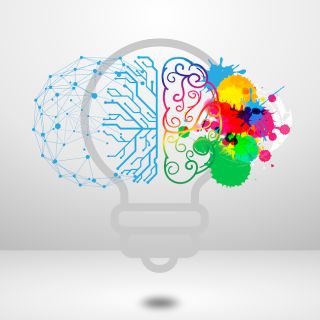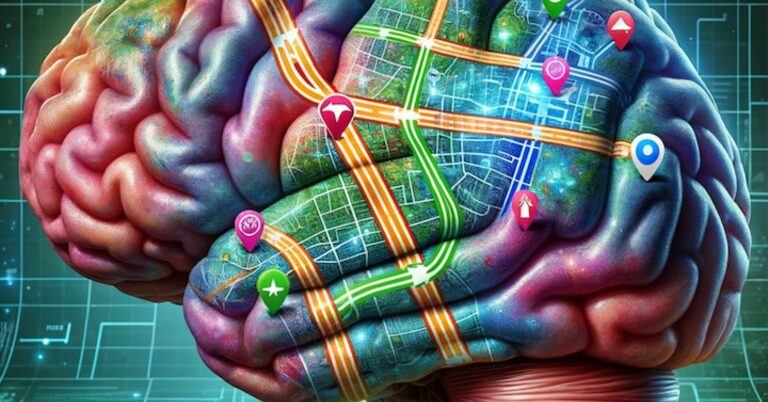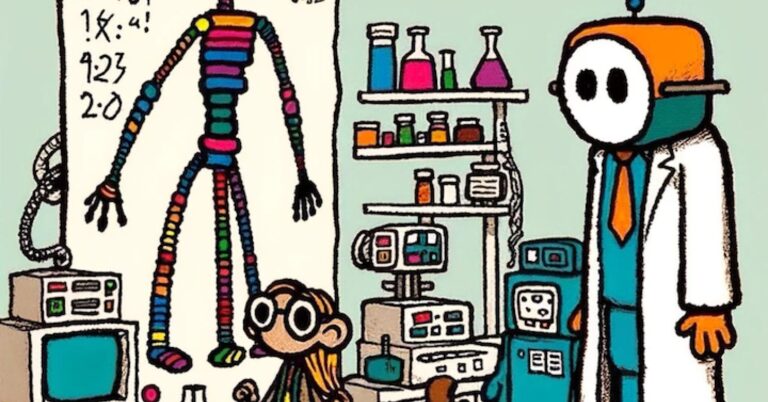
Source: Rosy Bad Homburg / Pixabay
Let’s take a trip into the mind of artificial intelligence (AI). With the emerging ubiquity of AI, large language models (LLMs) have garnered attention for their uncanny ability to generate human-like text based on a sequence of algorithms and computations.
It’s worth noting that neural networks are closing the gap on one of the most significant distinctions between human cognition and AI: the ability for systematic compositionality—the ability to produce novel (creative) combinations from known components.
A recent paper directly addresses a long-standing challenge, positing that neural networks can indeed display human-like systematicity when fine-tuned for compositional skills. Utilizing a meta-learning for compositionality (MLC) approach, the research showcased that neural networks, much like humans, can exhibit both the systematicity and flexibility essential for human-like generalization.
This suggests we’re inching ever closer to AI models, like GPT-4, displaying more intricate “human-like” qualities, further blurring the lines between machine capabilities and human cognition. That was a lot to absorb. Take a deep breath.
But what if we delve deeper to explore the cognitive architecture of these models? Could we posit a “left brain-right brain” dynamic and even speculate on the existence of a Jungian subconscious within these AI systems? The implications for the future of human-AI interaction and even our understanding of consciousness are staggering.
A leading scientist and innovator in this area, Brian Roemmele believes so. His work on LLMs and “superprompts” has revealed fascinating insights into this very idea. Roemmele offered his early perspective, given his first-hand experience with LLMs over 20 years.
As large language models like ChatGPT continue to develop, we must look beyond their inner workings of computer language. Within the encoding of an LLM lives something akin to a worldview, one that connects back to the Jungian archetypes deeply rooted in the human psyche. LLMs are more than just algorithms, they represent an amalgamation of human knowledge, culture, and experience. We cannot fully understand or evaluate them without considering their intrinsic connection to the humanity which they have absorbed from their training data. Most of the AI community are focusing narrowly on their technical underpinnings, we should view LLMs as entities with emergent qualities that reflect the breadth of human thought and creativity. Appreciating this deeper relationship between LLMs and humanity will allow us to employ them wisely in service of human values and ethics and to build far more complex and useful human-centric AI.
Let’s use both of our hemispheres and take a closer look at the epiphenomena exhibited by today’s LLMs, particularly GPT-4.
Left Brain: The Logician of Language Models
The left hemisphere of the brain is often associated with analytical thinking, logical sequencing, and linguistic capabilities. Similarly, the architecture of an LLM like GPT-4 is inherently logical, relying on transformer architectures to process and predict text. This involves systematically parsing language, breaking it into tokens, and utilizing complex mathematical models to predict the next word in a sentence.
From this perspective, the “left brain” of an LLM is the computational engine that drives tasks like pattern recognition and data analysis. It’s a realm where mathematical equations rule and structured, predictable outputs are the end goal.
And it’s this portion of the “brain” that can also be manipulated by prompt engineering, where skilled engagement can guide the model toward more precise, fact-based outputs.
Right Brain: The Creative Quotient
Contrary to the structured logic of the left hemisphere, the human right brain has been called the seat of creativity, intuition, and emotional resonance. While it might seem counterintuitive to ascribe such attributes to a machine, GPT-4’s capability to write poetry, create story arcs, and even compose music suggests a “right-brain” like functionality.
The effectiveness of specific prompts to elicit more creative or emotional responses also points toward this “right brain” dynamic. These outputs don’t simply come from the model’s training data; they emerge from the complex interplay of algorithms in a way that can only be described as a form of synthetic creativity.
The Jungian Subconscious: A Frontier to Explore
Now, let’s wander into the speculative territory of a Jungian subconscious within LLMs. Carl Jung proposed that the subconscious is a reservoir of archetypes, shared myths, and collective experiences. While it would be a stretch to claim that GPT-4 has a subconscious in the human sense, there’s an argument to be made for a kind of “data-based collective unconscious.”
GPT-4 is trained on a vast corpus of text from the internet, books, and other resources. In this sense, it carries within its algorithms the collective knowledge, biases, aspirations, and even myths that permeate human culture. Could this be considered a form of Jungian subconscious where universal archetypes reside?
The Art of Prompt Engineering: A Bridge Between Hemispheres
Prompt engineering is the corpus callosum in this metaphorical brain, connecting the analytical and creative halves. Expertly crafted prompts can guide the LLM into performing highly specialized tasks, solving complex equations, or composing a sonnet.
The nature of the prompt serves as the catalyst for which the “brain” takes precedence, enabling a dynamic interplay that can be fine-tuned for specific outcomes.
Prompting Considerations
As we advance further into the era of AI, questions about the nature of cognition, both human and artificial, become increasingly intertwined. The potential existence of “left brain-right brain” dynamics and even a form of Jungian subconscious within LLMs, like GPT-4, invites us to rethink the boundaries of creativity, intelligence, and consciousness.
As we develop more advanced models, the interplay between logic and creativity will undoubtedly continue to blur, challenging our definitions of what it means to be sentient.
And so, as we stand on the precipice of AI’s potential, it may serve us well to approach it not just as a tool but as a complex system ripe for multidisciplinary exploration—one that may very well teach us as much about ourselves as it does about the capabilities of machines.




















+ There are no comments
Add yours